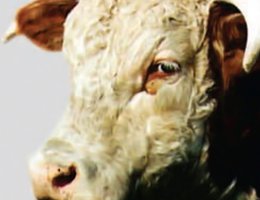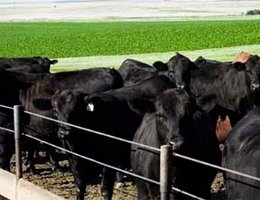

The production of beef is one agricultural business that became very "industrialized." It is industrial in the sense that the different steps in the production process have become very specialized with standardized products at each step.
At one time, all of these functions would take place on a single, diversified farm. The farmer would grow the grain and hay, breed the cows, feed the calves, and transport them to the market in his or her own truck. At the end of the twentieth century, separate companies performed each step.
Because of this industrialization, the cattle business was a major battleground over whether I-300 should be retained or repealed. Corporate farming interests argued that large beef businesses would move to other states if they couldn’t operate as a corporation in Nebraska.
The Nebraska Livestock Feeders Association (now merged into Nebraska Cattlemen) was one of the first farm organizations to lobby for the modification or removal of Initiative 300 from the Nebraska Constitution. Some members of the Nebraska Corn Growers Association also wanted to change I-300. Large corporate feed lots provided a large market for corn growers, a market that small individual farmer-owned feed lots can not match.

Western Nebraska range land with its sandy soil is especially attractive to large-scale feeding operations. Western farmers and ranchers envisioned rising land prices if corporations were allowed to reenter the land market.
Supporters of I-300 cited environmental concerns with contamination from the waste of large-scale cattle operations. The sandy soil could allow manure to drain into underground water tables and pollute them. They also argued that the drop in the number of cattle on feed in Nebraska was not due to Initiative 300, but rather to the overall deterioration of financial situations of farmers and feeders.
Supporters of the Amendment also argued that if corporations were allowed to once again engage in cattle feeding operations, they would just add to the oversupply of cattle and lead to even lower cattle prices. Family-sized feeders could be as efficient as corporate feeders, supporters argued, but they couldn not compete against the unfair tax advantages enjoyed by corporations. They cited the limited liability for corporate shareholders as an unfair advantage. Furthermore, limiting corporate cattle feeding would provide greater opportunities for family cattle feeders and family farm hog operations.
More than 54% of the Nebraska farmers who responded to a University of Nebraska at Lincoln poll indicated they favored prohibiting meat-packing firms from engaging in livestock feeding operations. Thirteen per cent disagreed and 33% had no opinion.
Find out more about modern cattle operations in Nebraska.
NEBRASKA BEEF GOES GLOBAL